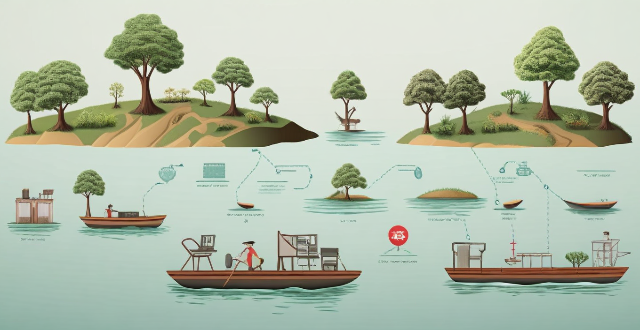Rainwater harvesting offers environmental, economic, and water security benefits. It reduces runoff and replenishes groundwater. Economically, it saves on utility bills and provides a backup supply. During droughts or emergencies, harvested rainwater is a crucial resource. While generally cleaner than treated municipal water, it may require filtration. Communities can reduce urban heat island effects and raise awareness through rainwater projects. Challenges include legal restrictions and initial costs. Successful implementation requires proper design, maintenance, and pest management.

The Potential of Rainwater Harvesting as a Supplement to Traditional Water Supplies
Rainwater harvesting, also known as rainwater collection or roofwater harvesting, is the process of collecting and storing rainwater for reuse. As an alternative water source, its potential as a supplement to traditional water supplies is multifaceted and significant. Here are some key points highlighting this potential:
Environmental Benefits
- Reduction in Runoff: By harvesting rainwater, there's less runoff into streets and storm drains, which can help reduce pollution of local waterways.
- Groundwater Recharge: When rainwater is absorbed into the ground, it helps replenish groundwater supplies.
Economic Advantages
- Cost Savings: For households and businesses that use large amounts of water, rainwater harvesting systems can lead to significant reductions in utility bills.
- Independence from Municipal Supply: In areas where municipal water is expensive or unreliable, rainwater harvesting provides a reliable backup supply.
Water Security
- Drought Resistance: Rainwater harvesting can provide a critical source of water during droughts when traditional water sources may be limited.
- Emergency Water Source: In case of disruptions to the main water supply, stored rainwater can serve as an emergency supply.
Quality Considerations
- Reduced Chemicals: Unlike treated municipal water, rainwater doesn’t contain added chemicals like chlorine and fluoride.
- Filtering Needs: While generally clean, rainwater may require filtration to remove debris and pollutants before use.
Community and Urban Planning
- Urban Heat Island Reduction: Green roofs combined with rainwater harvesting can help reduce urban heat island effects.
- Community Education: Engaging communities in rainwater harvesting projects can raise awareness about water conservation and sustainability.
Implementation Challenges
- Legal and Regulatory Issues: Some areas have laws or regulations that restrict or dictate how rainwater can be collected and used.
- Initial Costs: The installation of rainwater harvesting systems can be costly, although these costs are often offset by long-term savings.
Best Practices
- Proper Design: Systems should be designed to ensure adequate collection and storage capacity based on local rainfall patterns.
- Maintenance: Regular cleaning of gutters and filters is necessary to maintain system efficiency.
- Integrated Pest Management: To prevent mosquito breeding, integrated pest management strategies should be employed.
Overall, the potential of rainwater harvesting as a supplement to traditional water supplies is significant. It offers environmental, economic, and water security benefits while promoting sustainable practices. However, successful implementation requires careful planning, consideration of legal frameworks, and ongoing maintenance.